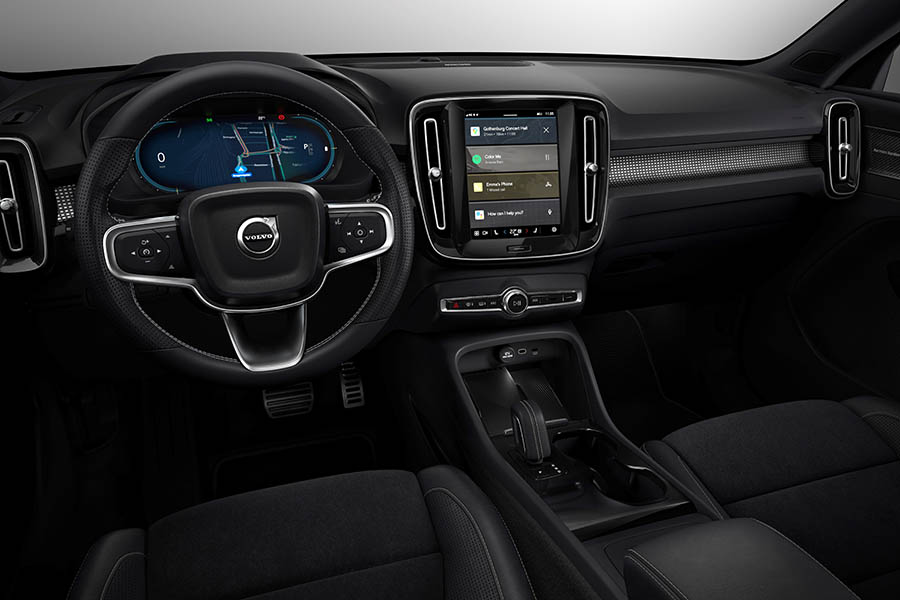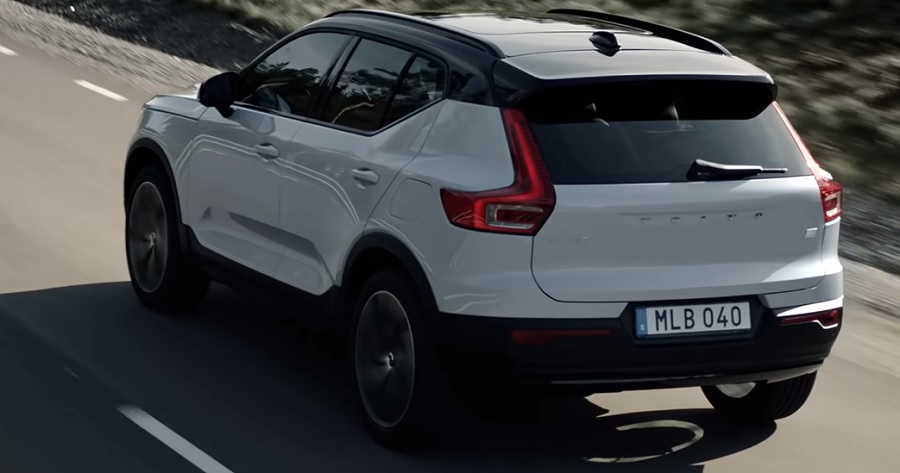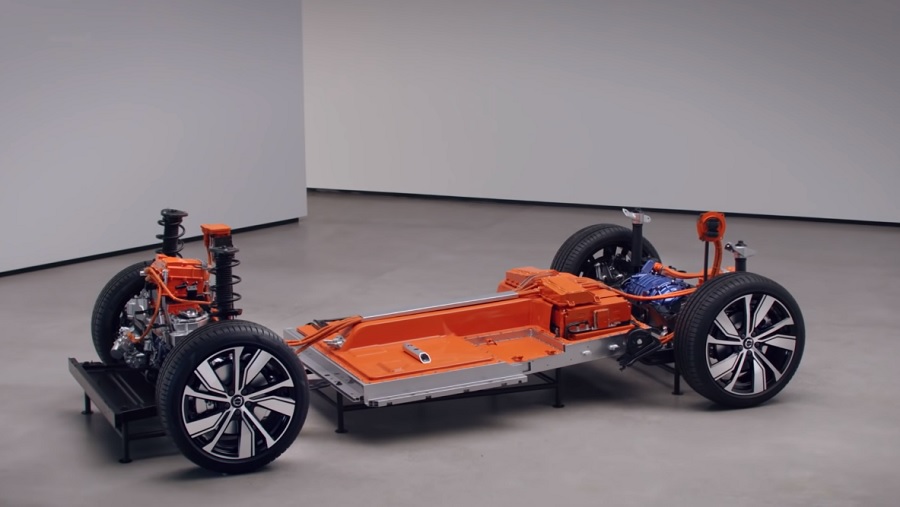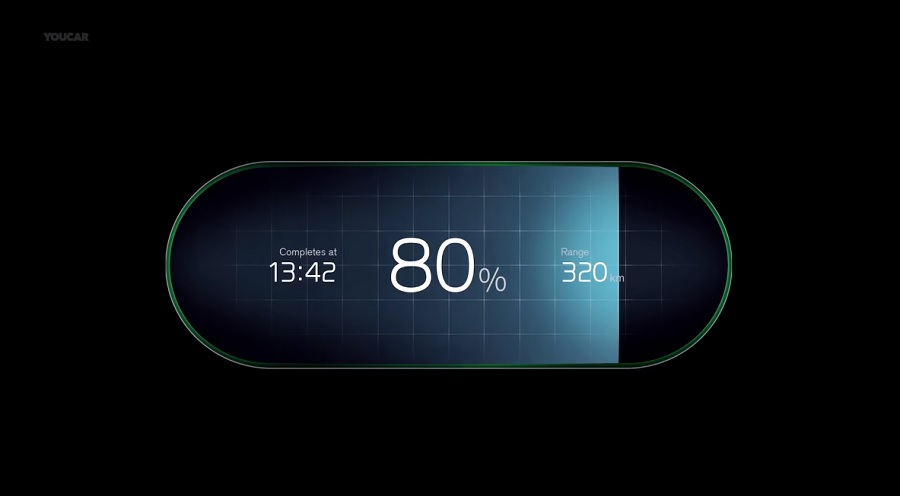The XC40 is the first Volvo car to be fully electric. Technically, however, it is closely related to an already known vehicle.

Now things are purely electric at Volvo too: With the XC40 Recharge P8 AWD, the Swedes are bringing the brand’s first vehicle that is exclusively battery-powered. The mid-range SUV, powered by two electric motors with a total of 300 kW / 408 PS, has a 78 kWh battery on board, which should enable a range of around 400 kilometers according to WLTP. From the gross basic price of initially just under 62,000 euros, there is also the environmental bonus in Germany, which for vehicles in this price class is 7,975 euros.
The somewhat complicated-looking name has to be read as follows: “XC40” refers to the model itself, which is also available with gasoline and diesel engines and as a plug-in. “Recharge” makes it clear that it is an electric version, but Volvo also uses the term for plug-in models. The “P” stands for “Pure”, ie the pure electric drive, the “8” traditionally denotes the most powerful motorization within a model series and “AWD” naturally stands for the electric motors attached to the front and rear axles realized all-wheel drive.

In contrast to the naming convention, driving in an e-Volvo is as we can expect from an e-car. In this case only particularly sporty. Over 400 hp are always working here on both axles, and anyone who wants to accelerate to 100 km / h in less than 5 seconds is so confident and safe overtaking any agricultural vehicles that are currently available on the country road, almost as if you were driving a super sports car. However, it doesn’t always go on like this, because Volvo regulates the top speed at 180 km/h, as with all new models.

Unlike VW, for example, with the ID models, Volvo offers a so-called one-pedal drive that can be activated. This means that when you lift the “accelerator”, the brakes are applied hard, which recuperates energy in the battery and protects the normal brake. However, according to its own statement, in order to keep the complexity in the vehicle low, Volvo does not offer any different settings. The driver either has very strong braking, in the city some drivers probably even too strong braking, or he switches off and then has none at all.

Nevertheless, the one-pedal drive is an asset, it is fun to use and at least a little energy flows back into the batteries, which are usually placed in the underbody to save space. The curb weight of almost 2.2 tons resulting from the size of the batteries is hardly a problem in view of the power of the two electric motors. Naturally, the weight only pushes a little over the front wheels when cornering more quickly, despite all-wheel drive.

The Recharge P8 is not an XC40 that only got a few batteries installed. The entire front section was redesigned and, as is typical for the Swedes, made extremely crash-proof. Visually, the electric version only differs from the other models at the front: This is closed and of course does not need air intake for cooling the internal combustion engine, as it doesn’t have any. A sight that you have to get used to.

A nice special feature: there is no longer a start button, rather the vehicle registers whether the driver’s seat is occupied. Then one movement of the selector lever of the automatic entrance switch is enough to put the Volvo into readiness. Incidentally, the space available in the E version of the XC40 is fully retained. Although the compartment under the trunk floor falls victim to the battery, there is a small additional compartment under the front hood. The 31 liters available there are enough for the charging cable and a small sports bag, for example.
The Swedes deserve special praise for the interior, because it differs only marginally from the normal XC40 models. The materials and their workmanship look high quality, unlike the e-models of some competitors. However, you can expect that with a gross base price of 62,000 euros, even if the buyer will ultimately only pay 54,025 euros after deducting the environmental premiums from the state and manufacturer.

We actually missed a head-up display on the test drive, which is currently not available for the entire series. Volvo relies on Android, i.e. Google, for infotainment and communication ; Voice control, apps and sat nav work very well, and there are no internet connection costs. IPhone owners can also use the system, but Apple Car Play will not be available until next year.

For Volvo, the XC40 is the first pure electric car, but the drive unit is not completely new, but is already being offered by the sister brand Polestar in Model 2 with the same performance. This is not a disadvantage, because the entire drive looks confident and is already mature. The Swedish electric car definitely doesn’t have to hide from the few competitors in the segment such as a BMW iX3, the Tesla Model Y or the Mercedes EQA.

Technical specifications
Five-door, five-seater mid-range SUV

- Length: 4.43 meters
- Width: 1.86 meters (with exterior mirrors: 2.03 meters)
- Height: 1.65 meters, wheelbase: 2.70 meters
- Boot space: 414 – 1,328 liters
- Drive: 2 electric motors (front / rear), each 150 kW / 204 PS, system output: 300 kW / 408 PS
- 1-speed automatic
- all wheel drive
- Torque: 660 Nm at 1 – 4,350 rpm
- 0-100 km / h: 4.9 s
- Vmax: 180 km / h
- Electricity consumption (combined): 23.8 – 25 kWh / 100 km
- Range: 400 – 418 km, CO2 emissions: 0 g / km
- Efficiency class: A +
- Emission standard: Euro 6d
- Price (Germany): from EUR 62,000 (incl. 19% VAT), minus EUR 7,975 environmental bonus










